Dialogue - Emiowasu [Part 2] -
![対 話 - えみおわす [ 後 編 ] -](http://utusiki.com/cdn/shop/articles/content_link_about_img01.jpg?v=1744088469&width=1770)
Emiowasu clothing is made from natural materials and with careful handwork.
Although the pattern is simple and has straight lines, it is easy to move around in, and the design and precise stitching are carefully crafted down to the smallest details so that you can wear it for a long time in a variety of situations.
What kind of daily activities lead to the creation of clothing that suits anyone and is a part of everyday life?
Following the first part of the interview tracing their journey so far, the second part will talk about the production process.
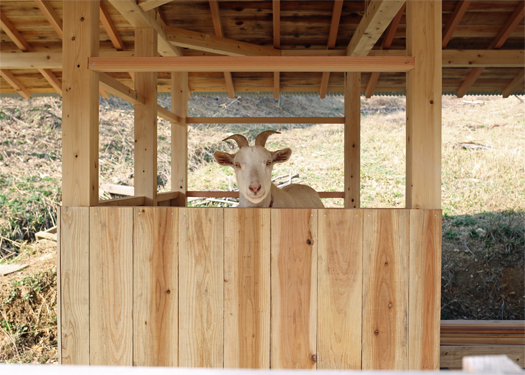
Together with the master carpenter, he also builds shelves and goat sheds so that the goats Meme and Seven can graze freely.
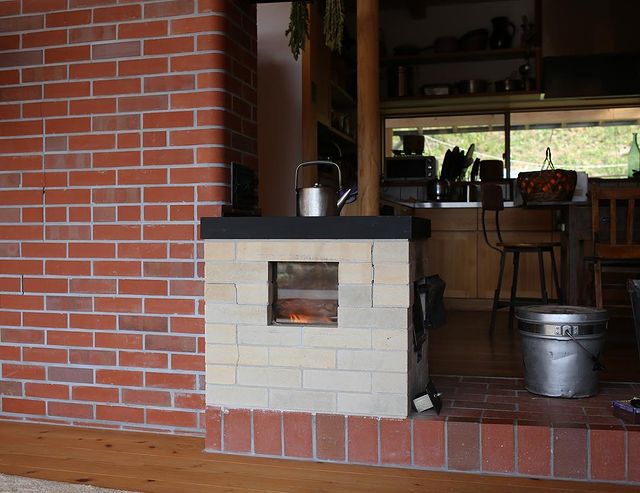
In the center of the house is a large "betika" made of bricks, like a main pillar. "Once the bricks are heated, they can last for half a day without a fire."
Until a garment is made
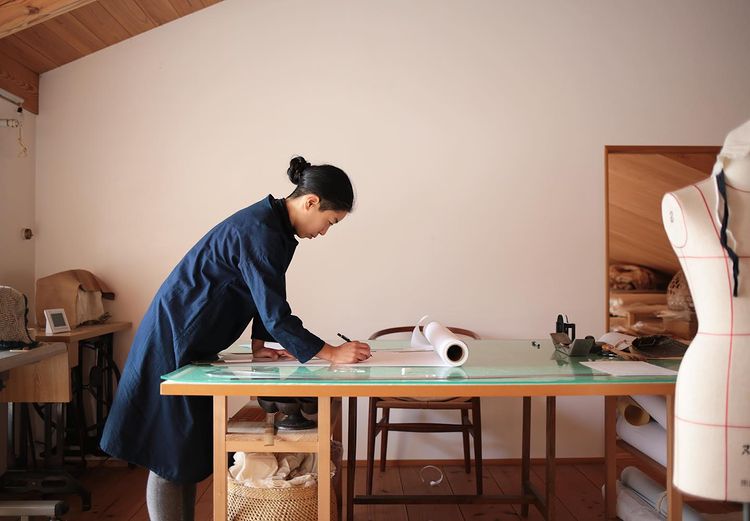
"I enjoy unraveling how things are made and imagining the thoughts and process that the person who made them went through," says Junko.
She majored in oil painting at Tokyo University of the Arts, and took a year off in 2004. During her time off, she traveled to many different countries, and while living in India and Thailand, she began to teach herself how to make hand-sewn clothing.
"I wasn't taught or taught anything. I learned how to make clothes by making them myself and through that experience.
What attracted me to ethnic clothing was that when I tried to make my own clothes, I was really impressed by the process of cutting the fabric in a straight line to create holes so that the neck and arms could be exposed."
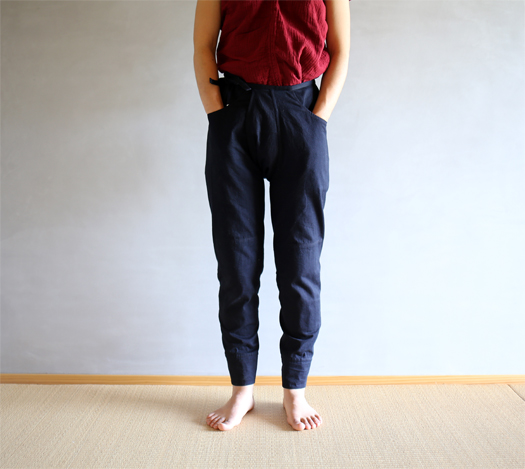
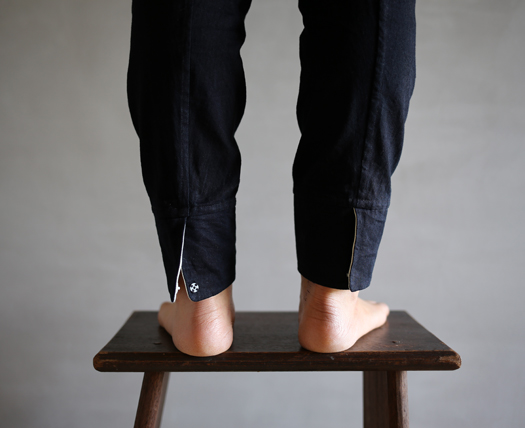 "Nora Pants" can be worn for a wide range of occasions, from everyday wear to farm work. The motif is traditional Japanese loincloths, which have long been used as work clothes in the fields and mountains. The part from the crotch to the waist is divided into left and right halves, which are tied with strings and made slim from the thighs to the heels so that they fit close to the skin.
"Nora Pants" can be worn for a wide range of occasions, from everyday wear to farm work. The motif is traditional Japanese loincloths, which have long been used as work clothes in the fields and mountains. The part from the crotch to the waist is divided into left and right halves, which are tied with strings and made slim from the thighs to the heels so that they fit close to the skin.
Emiowasu clothes seem to accept the wearer as they are.
In addition to being functional as everyday wear, it also combines the fun of wearing it to lift your spirits.
A lot of effort goes into making each piece of clothing.
 "I always pay attention to carefully finishing the back of the garment so that it doesn't fray when I wear it," says Junko, who says that there are endless things to consider when making patterns.
"I always pay attention to carefully finishing the back of the garment so that it doesn't fray when I wear it," says Junko, who says that there are endless things to consider when making patterns.
The way the fabric is cut, the extra work of pinning and basting, the treatment of seam allowances, the gussets at the sides and crotch to allow for ease of movement, narrow stitching that affects comfort, and no serger sewing, which tends to fray after washing.
To ensure that the garments can be worn by people of a variety of body shapes, the lines of the hips and thighs are repeatedly adjusted in 1mm increments.
It is not difficult to imagine that they went through a lot of trial and error in the process of pursuing comfort for everyday wear.
Even the invisible details are carefully crafted until we create clothes that fit the body perfectly.
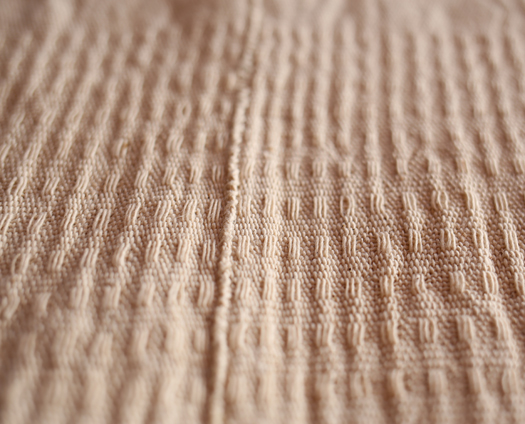
At the Okayama atelier, Junko works on clothing patterns and samples, and works with seamstresses who help with sewing in various locations. Sometimes she is asked to make complicated patterns that are difficult to make at a sewing factory. Junko says she is always in awe of the skilled seamstresses.
Continuing life here
Just like living in a place that is comfortable, eating food that you feel comfortable with and find delicious, in the same way, we should be able to wear clothes that naturally make us feel comfortable.
At Emiowasu, everyday life and manufacturing are inseparably linked.
It's been about 10 years since I moved from Tokyo to Okayama.
Living an enviable life surrounded by animals and close to nature, like the way people live in Thai villages, has become a part of everyday life, but what kind of life do they envision for the future?
"I grow vegetables in the fields and am surrounded by animals such as goats and dogs, and before I knew it, I was spending more time with animals than with people. Spending time with animals also means coming face to face with life, and there are times when it can be quite moving, but I would like to live a more self-sufficient life."
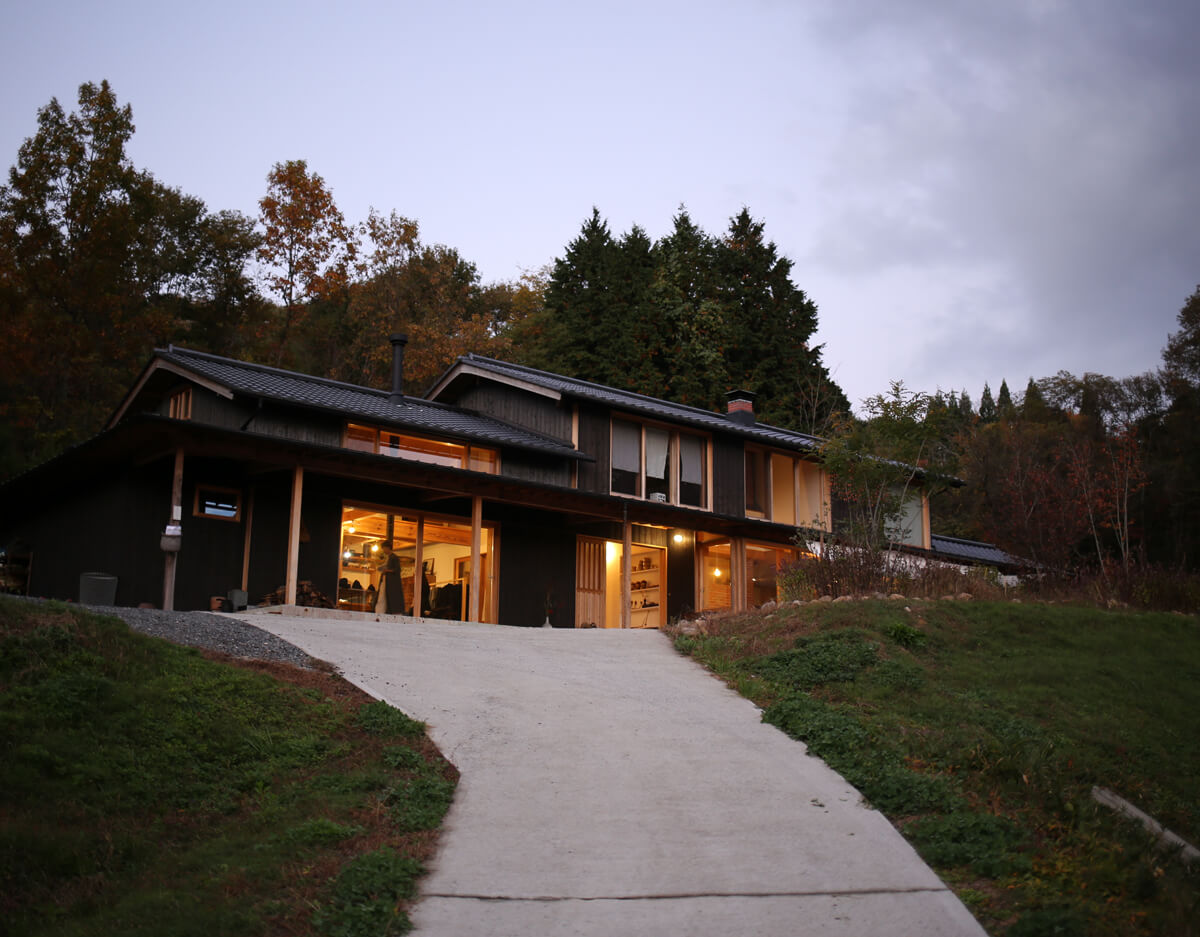 The house is beautiful and well-ventilated. The grounds are equipped with solar panels and a composting toilet that turns compost into soil, allowing residents to live in harmony with nature.
The house is beautiful and well-ventilated. The grounds are equipped with solar panels and a composting toilet that turns compost into soil, allowing residents to live in harmony with nature.
- Emiowasu
- Emiowasu is a clothing brand run by husband and wife Abe Naoki and Junko, based in Kibichuo Town, Okayama Prefecture. They use hand-spun and hand-knitted fabrics from the Himalayan region of India, hand-woven fabrics from small villages in northern Thailand, and fabrics woven by weavers all over Japan to create clothes, bags, and other items that are made with natural materials and handcrafted techniques.
https://emiowasu.com/
After this conversation , my image of the ideal home and lifestyle changes every time I go for an interview. No matter what scene you look at, Junko and her family's life surrounded by animals is relaxed and natural, and their bright smiles as they talk about their lives speak more than anything of their sense of fulfillment. Comfortable clothing born from a lifestyle with an aesthetic sense will surely continue to be passed down from person to person in the future.
Interviewer and writer: Yoshiaki Ono
Emiowasu Exhibition Dates: March 20th (Sat) – March 28th (Sun) 2021
*No holidays during the period Artist's presence in the gallery March 20th (Sat)
Time 13:00-18:00
![対 話 - えみおわす [ 前 編 ] -](http://utusiki.com/cdn/shop/articles/13623778305083.jpg?v=1744083775&width=1280)
